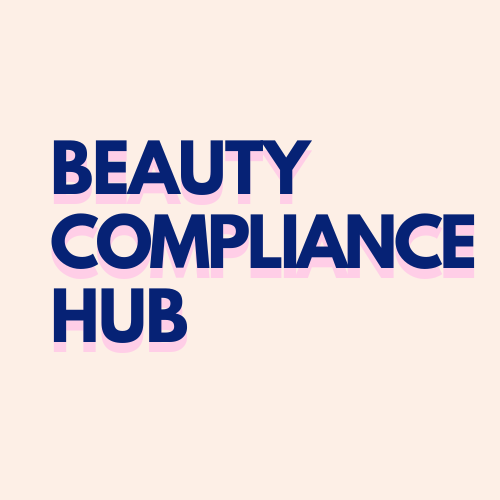Mastering Beauty Claims – How to Stand Out and Stay Compliant in a Competitive Market
In the fiercely competitive world of beauty and cosmetics, product claims are one of the most powerful tools a brand can use to capture attention, build loyalty, and drive sales. From promises of flawless skin to anti-aging breakthroughs, these claims define a brand’s identity and influence purchasing decisions. However, with this power comes the responsibility to ensure that every claim is truthful, backed by science, and compliant with global regulations.
Brands that fail to substantiate their claims face serious risks from potential law suits, regulatory fines to damaged reputations and lost consumer trust. In this guide, we’ll break down the essentials of beauty claims, how to substantiate them, the dangers of false advertising, and how brands can future-proof their strategies for success.
Why Beauty Claims Matter
Beauty claims are essential for:
Brand Differentiation: Helping consumers understand the unique benefits of a product.
Consumer Trust: Building credibility and loyalty through transparency.
Regulatory Compliance: Avoiding fines, product recalls, or reputational damage.
Types of Beauty Claims
Efficacy Claims: Focus on the product’s effectiveness (e.g., "reduces wrinkles in 4 weeks").
Sensory Claims: Highlight the user experience (e.g., "leaves skin feeling silky").
Functional Claims: Describe the functional benefits (e.g., "moisturizes for 24 hours").
Natural and Clean Claims: Assert the use of natural or non-toxic ingredients (e.g., "100% natural").
Free-From Claims: Focus on what the product does not contain (e.g., "paraben-free").
Dermatologically Tested Claims: Indicate safety testing (e.g., "dermatologically tested").
How to Substantiate Beauty Claims
Clinical Studies: Conduct controlled, peer-reviewed studies to demonstrate efficacy.
Consumer Perception Testing: Gather real-world user feedback for experiential claims.
Instrumental Testing: Use scientific instruments to measure outcomes (e.g., hydration, firmness).
In-Vitro Testing: Laboratory tests on cells or skin models to validate certain benefits.
Literature Review: Use existing scientific studies to support ingredient benefits.
Safety Assessments: Ensure claims are backed by toxicological and safety data.
Issues with False or Misleading Claims
Falsely marketing or advertising beauty claims can lead to significant issues, including:
Regulatory Fines and Legal Action: Authorities like the FDA, FTC, and EU regulators can impose hefty fines and initiate legal action.
Brand Damage and Consumer Distrust: Misleading claims can erode consumer trust, damage brand reputation, and lead to lost sales.
Product Recalls and Market Withdrawal: Non-compliant products may need to be withdrawn from the market, creating significant financial losses.
Negative Media Coverage: High-profile lawsuits and regulatory actions can attract negative press, impacting long-term brand equity.
Increased Scrutiny: Brands that face enforcement actions often encounter stricter regulatory oversight in the future.
Case Studies – When Beauty Claims Go Wrong
1. Sunday Riley – Fake Reviews Controversy
In 2019, Sunday Riley faced backlash after the U.S. Federal Trade Commission (FTC) found the brand had instructed employees to post fake reviews on Sephora’s website to boost product ratings. The company was not fined but agreed to settle the charges, highlighting the importance of transparent marketing practices.
2. L’Oréal – Anti-Aging Claims
In 2014, L’Oréal USA faced legal action over its claims that certain products could "repair genes" and make skin appear younger. The FTC ruled that these scientific-sounding claims were misleading and not supported by adequate scientific evidence, resulting in a settlement that restricted L’Oréal from making such claims without solid substantiation.
3. Tarte Cosmetics – Natural Claims
Tarte Cosmetics faced criticism for its “high-performance naturals” tagline, as some products contained synthetic ingredients. This sparked consumer backlash and forced the brand to clarify its marketing to avoid misleading consumers.
4. Neutrogena and Aveeno – Sunscreen SPF Claims
In 2021, Johnson & Johnson had to recall certain Neutrogena and Aveeno aerosol sunscreen products after testing revealed traces of benzene, a potentially harmful chemical. This raised concerns about the safety of products labeled as “safe” and “effective,” impacting consumer trust.
Moving Forward – Best Practices for Brands
To avoid the pitfalls of false advertising and strengthen consumer trust, brands should:
Invest in Robust Testing: Prioritise clinical, instrumental, and consumer testing to validate claims.
Stay Informed on Global Regulations: Keep up with changing regional requirements to avoid non-compliance.
Develop Clear, Transparent Messaging: Focus on honesty in marketing and avoid exaggerated promises.
Document and Archive Data: Maintain detailed records of testing results to substantiate claims if challenged.
Work with Regulatory Experts: Collaborate with compliance specialists to ensure accurate labeling and advertising.
Educate Marketing Teams: Ensure everyone involved in branding understands the importance of truthful claims.
Final Thoughts
In the ever-evolving beauty industry, substantiating claims is not just a regulatory requirement – it’s a critical component of brand integrity. By investing in robust testing, transparent communication, and a deep understanding of regional regulations, brands can confidently stand behind their promises. This approach not only protects against legal challenges but also builds lasting consumer trust and brand loyalty. In a market saturated with bold promises, the brands that rise above the noise will be those that back their words with real science and authentic storytelling.










